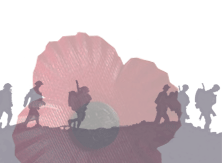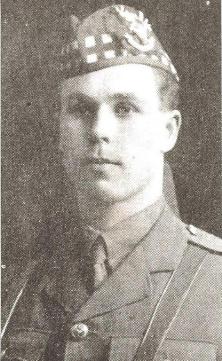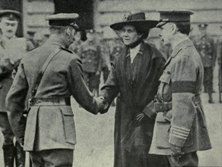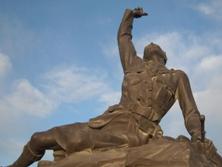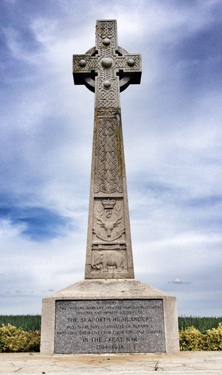Donald Mackintosh VC
Their names will be remembered for evermoreWounded twice as he crossed no man's land, 21-year-old Lieutenant Donald Mackintosh of the 2nd Battalion, The Seaforth Highlanders hauled himself to his feet and rallied his troops toward the German lines through a murderous rate of machine gunfire. The Highlanders repeatedly attacked, breaking through the German wire and eventually seizing the line. Arras Offensive Well-dug-in defences had thwarted British infantry attacks at the Somme and later in the war, at the first Battle of the Scarpe in the Arras Offensive of April 1917. The Germans had retreated from the Somme, moving east to the more heavily defended Hindenburg Line they had built in the winter of 1916 in north-eastern France. At Easter 1917, British artillery laid down a barrage of heavy shelling on the Hindenburg Line. British and Canadian troops had advanced several miles in open warfare towards the German defences and prepared to attack their trench system on 11 April, two days after Easter Sunday. The barrage had largely failed because the artillery could not accurately target German machine gun positions. Consequently, when the Seaforths went over the top at noon that day, they ran straight into heavy gunfire from well-protected German machine gun positions and trenches. In crossing a space of 1,600 yards, The Seaforths lost 12 officers and 363 other ranks out of 432 who had gone over the top. Raining Shells and Bullets A sergeant who witnessed Mackintosh's actions said: "As soon as we went over the top it began to rain shells and machine gun bullets. Mackintosh was hit... and the men hesitated. He shouted from where he lay: "Never mind Seaforths, keep it up". He got to his feet, reaching the enemy trench, recalled the sergeant: "Under his leadership the men got back their confidence, repelling repeated enemy counter-attacks." On 10 June, 1917 The Sunday Post reported the action in which Mackintosh died. "It was the strangest sight... a double-wounded man with the nervous twitching of his face telling the agony he was enduring, toiling painfully." He directed 15 of his men who rushed the position and expelled something ten times their number. Mackintosh, despite bleeding profusely, refused to leave his post until the trench was secured. He died later that day of his wounds. Mackintosh was honoured in Glasgow as much for the respect in which his father was held, as for his own selfless heroism. He was the son of Dr Donald J Mackintosh CB MVO, medical superintendent of the Western Infirmary for 45 years. He had advised on South African hospitals during the Boer War, the rebuilding of Glasgow Royal Infirmary and in 1914 was supervising all military, war and territorial general hospitals in the Glasgow area. In December 1925, two windows commemorating Lieutenant Mackintosh were unveiled in the newly opened Elder Chapel, itself a war memorial, within the Western Infirmary. He is also listed on the memorial of his old school, Fettes College in Edinburgh. Mackintosh is buried in Brown's Copse Cemetery, Roeux, France but his Victoria Cross is now displayed at The Highlanders Museum, Fort George near Ardersier. Donald Mackintosh's citation in The London Gazette View original referenced text here: |
Images:
|






